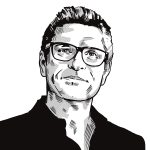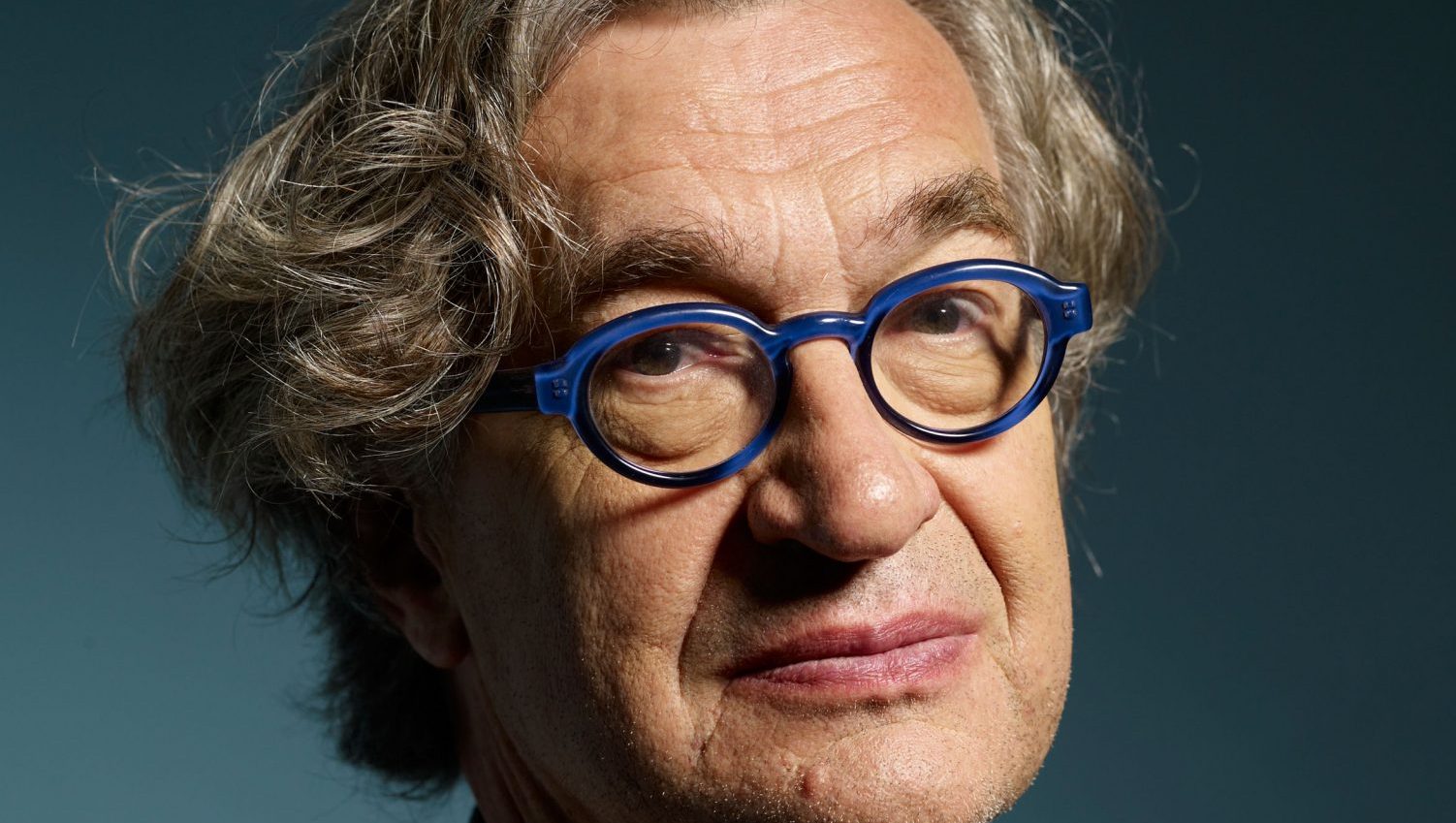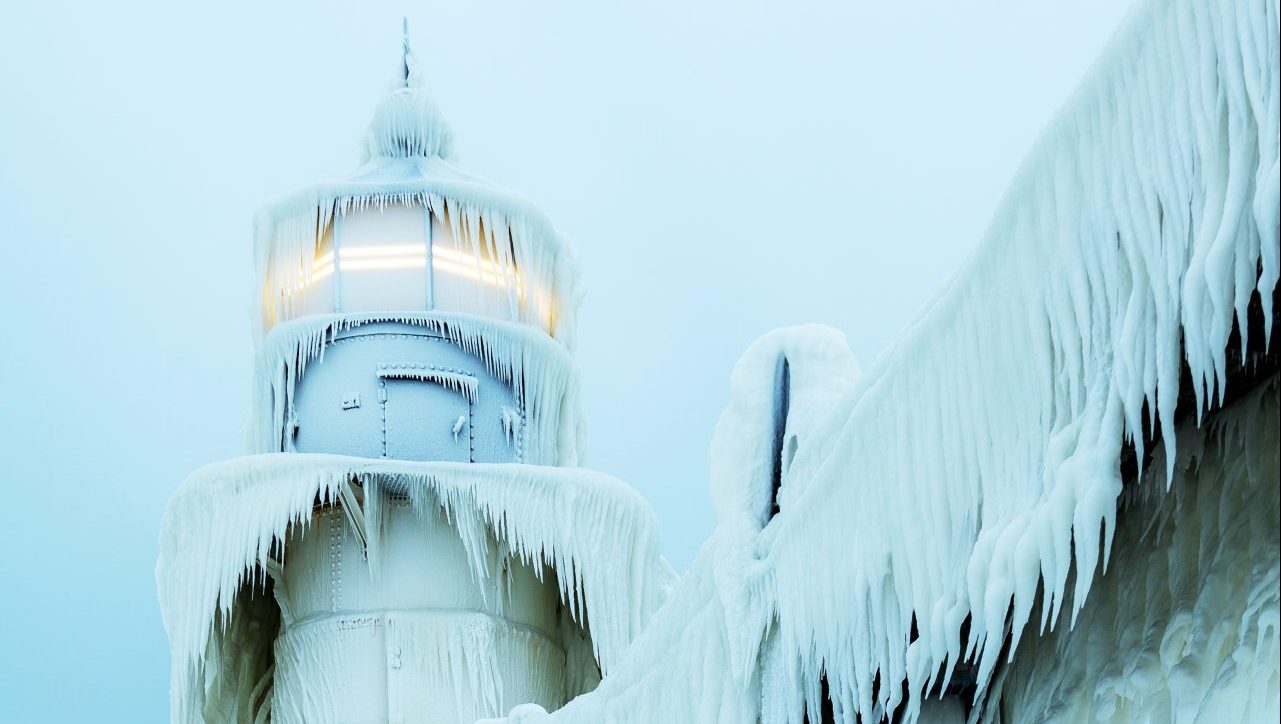Rubbing his hands with cold, Wim Wenders pops up on my computer screen. He’s just arrived at his country home about 90 minutes from Berlin and has driven through the snow to get there – he shows me the white thick blanket outside his window. “It was a dangerous drive, very icy,” he says.
But Wim Wenders likes to drive. He’s the king of the road, a chronicler of wide open spaces, he’s always on the move. “Oh yes, it’s always Wim getting into his little car,” he acknowledges. “I like to travel, I have always wanted to get away, to get the hell out of here.”
Wenders wanders. In the mid-1970s he made the European road movie trilogy of Alice in the Cities, The Wrong Move and Kings of the Road. He went to America and made Paris, Texas, which won him the Palme d’Or. He went to Cuba to make The Buena Vista Social Club. Before all of that, in 1965, he quit his university course in Düsseldorf and got in a car, a little “ugly duckling” second-hand Renault 2CV, and drove to Paris to become a painter.
“My dream was to drive through Europe without a passport,” he tells me. “That was the ideal for me, to just get in a car, to get out of Germany and go, with no borders, nothing to stop you, to feel part of one entity, that you belonged everywhere.” As soon as the European project came to life in 1994, he got in his car. “I made a film called Lisbon Story, and I just drove from Germany to Lisbon and filmed the journey – it was a beautiful moment for me.”
But now it’s all gone wrong. “When Brexit happened, I was wounded, I felt like I had a lost a leg.” He mistily recalls being nine years old and watching on TV the monumentally symbolic handshake between Konrad Adenauer and Charles de Gaulle at the so-called Treaty of Friendship. “That was my obsession growing up, the idea of a united Europe. So when Brexit happened, my childhood dream died and now I feel totally betrayed.”
Such despair at European history is a huge theme of Wenders’ current subject. His latest film is Anselm, a 3D documentary study of the work of Anselm Kiefer, one of the world’s best-known artists and certainly Germany’s most revered (and, let’s be honest, wealthiest).
Eleven years ago, Wenders gave the choreographer Pina Bausch the big-screen 3D treatment in a spectacular and successful documentary, simply called Pina, a film that put her dancers and dance moves in the German landscape around Wuppertal, as well as the dance studio and theatre. The single moniker Anselm bestows greatness on the painter and places him in the context of his vast works, sometimes filming him on his bicycle as he rides around the giant aircraft hangar of a studio in Barjac, near Nîmes.
These sequences illustrate the vastness of the canvases and the prolific output of their creator, something like that final shot in Raiders of the Lost Ark, and a symbol, too, of man’s tinyness in the universe, and in the sweep of history.
Kiefer himself is a taciturn presence, his serene silence giving the impression that he’s deep in thought, always searching for something, from a tiny bit of kit in huge drawers organised like a Formula 1 mechanic’s arsenal, to the answer to life and the infinite.
Artist documentaries can be literally like watching paint dry, but never has it been so literal here, nor so thrilling. Kiefer slathers his canvas with paint and with dried bracken or twigs and then sets about the impasto with a blow torch, setting areas of it ablaze. A couple of assistants are on hand with spray hoses to douse the fire when Kiefer gives the nod. The canvas is left to smoulder and smoke.
It’s quite something to witness. “But the thing is, Anselm said to me, ‘oh it’s so boring to watch a painter paint in a movie, always the least interesting part’,” remembers Wenders. “I had to really persuade him that I wanted to watch his process. It was quite a conflict between us. But for me, the whole point was I wanted to know how a single man could be so prolific and how he can paint the universe. I have known him for 30 years but I just couldn’t fathom him, not so much the technical aspect, but the mental process, even if the technique is part of it – how does he get the texture, how does he convey time itself in there? It mystifies me how he can enter a subject so deeply on one canvas…”
Anselm the movie (Wenders prefers to call it an “experience”) does follow the life of the painter, concentrating on the major locations of his output, beginning in his first atelier in the German countryside of the Odenwald, near Heidelberg, where he retreated in 1971 and painted and worked almost undetected and unknown for 10 years, amassing a large body of work with which he then exploded, controversially, on to the art scene.
He later moved to France, to the Barjac complex, practically an entire village of his art, before upping sticks (and stones) to a giant former warehouse for La Samaritaine department store, in Croissy-Beaubourg, to the east of Paris, not far from Disneyland.
Kiefer’s work deals with antiquity and with Germany’s Nazi past, with mythology and with books, history and natural materials often his non-representational, sculptural subjects. Wenders uses archive clips and stages reconstructions of certain childhood scenes, using Keifer’s own son, Daniel, as a stand-in for his father.
“Anselm didn’t want to know anything about what I was doing,” says the film-maker. “His only condition was that I had to ‘surprise’ him, constantly. We talked for days and for hours, so much that I have 1,000 pages of transcript of our conversations and that formed the basis for the film, for me to answer all the questions I had – as long as I kept surprising him.”
The work of Jewish poet Paul Celan features prominently, a big influence on Kiefer’s outlook, particularly the haunting Holocaust poem Todesfuge, read out here in full and which Kiefer drew on for a series of tableaux. There is not much lightness here.
Wenders acknowledges the similarities and differences. The two were born in the same year and grew up 500km apart, but joined by a fascination for the Rhine, which flowed past their respective childhood homes, and which they would gaze out over, dreaming into the distance. “I would look at Belgium and dream of anywhere, of escape, but all the bridges in Dusseldorf were burned, so you couldn’t go anywhere,” says Wenders. “Anselm was in the south, looking over to France, but we both had the rubble of the war around us and we both went to school to be taught by teachers who just a few years earlier were part of the Nazi regime.”
It affected them differently, in opposite ways. Wenders just wanted to leave and drove off to Paris in his 2CV. Kiefer retreated into creating art that confronted his country’s history. “I tried to leave Germany behind, wanted to get out and leave a country that I felt was pretending it had no past, which was of course a massive lie. So, I never poked at the lies, never examined the wound but Anselm did, and my colleague Fassbender did, but I wanted out. But Anselm, he stayed and he fought against forgetting, and he scratched at the surface of that lie and faced German history…”
Wenders looks sheepish on the Zoom as he tails off. I ask if he regrets leaving, then, and if he’s worked out why he just wanted to get away. “Oh, I felt I was born after it all, that I wasn’t responsible and I didn’t want that weight on my shoulders,” he says. “But Anselm, he shouldered it, he carried a lot of weight and he struggled a lot and he got bashed a lot for it. I hit the road.
“Eventually I went to America for 15 years and it was there, living and working there, I came to terms with who I am – which is nothing else but a German romantic, and there was no getting away from it, and I realised I could only make European movies and I came back and that’s what you see in Wings of Desire, the first time I dealt with my history, with Germany. It was the film of a homecoming man.”
It’s as if dealing with Kiefer’s work is answering a large part of Wenders’ own story, with, am I right in sensing a twinge of guilt and admiration for the other artist, or jealousy maybe, some self-loathing or self-esteem issues around, of his own film oeuvre, no matter how successful it has been?
“No, jealousy isn’t quite the right word,” muses Wenders, “but regret – yes, because I wanted to be a painter you see. And whenever I go into an artist’s studio I get a pain in my heart. I feel that this is the life I turned down, so it hurts – and I made the decision to be in cinema and I always think it was the right choice for me and I’ve been good at it, but if I smell the smell of paint and the canvas, I do get a stab of regret.”
Wenders is one of cinema’s restless polymaths. “Yes, I wanted to do too much. I wanted to be a writer, and a musician, and I loved architecture and drawing and I still want too much. When I was studying art in Paris, my flat was so cold that I went to the movies every day, I saw 1,000 movies, and the cinemathèque was warm and my flat was not, so I got a crash course in cinema and discovered that everything was in there and I could do all my favourite pursuits and movies were that complete form.”
And he has covered all those bases. From road movies to documentaries about the blues, to music videos and films about dance and painting and thrillers and spiritual romances about angels on earth. You sense, with both Kiefer and Wenders, that they’re both searching for something, for the right answer, both of these men born amid the ruins of the Nazis.
I wonder then what he sees as his role now, as a German statesman, a figurehead, a grand old man of German letters and art. “Well, I’m still a fighter and an eternal optimist and I believe movies can help people understand their past, like they’ve helped me to do,” he tells me. He’s been head of the European Film Academy for over 20 years and is looking forward to welcoming the European film community to Berlin for the European Film Awards on December 8.
“I feel it’s my job to promote a peaceful Europe, and that when the Berlin Wall fell, we thought we wouldn’t see any more wars ever and there was joy but now, we have a war right in the middle of Europe. And it’s all based on old ideas coming back, of ego and nationalism and this idea of making things great again, and there is antisemitism on our streets and that is a terrible thing to go to sleep with every night.”
Wenders also has a gentler, wistful film called Perfect Days coming out shortly, the charming story of a Japanese toilet cleaner in Tokyo who listens to cassettes in his car. It’s far from the austere yet engrossing study of Anselm, yet somehow of a piece with its search for meaning and purpose, a way to live in the world and engage with it, or to retreat from it. To want out, or to be in.
Not that Wenders is anywhere near the end of a career, but he must have some conclusions to draw from all the history he’s lived through, even if often he feels he’s failed to confront it, or reckons his mate Anselm can say it all in just one large painting. I think his work rather sums up the latter half of the 20th century – taken as a whole, it’s a study of modernity itself, its technologies, spaces and societal structures, its human behaviours and its deepest desires. So, what has he learned from making all these images, filming all these words that get spoken, these characters that move and think?
“I find it so weird that mankind can’t learn,” he says, definitively. “It sucks. I mean, we saw how our nationalism hurt our countries more than anything else right in the middle of the century, and now they say it’s back, that’s what we’re going back to. But can’t they see, nationalism was always the problem, not the solution – all those young people who are being lied to, about Brexit and about nationalism, I feel so sad about that.”
Anselm is released in the UK in 3D from December 8




